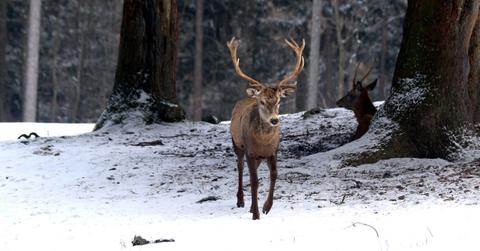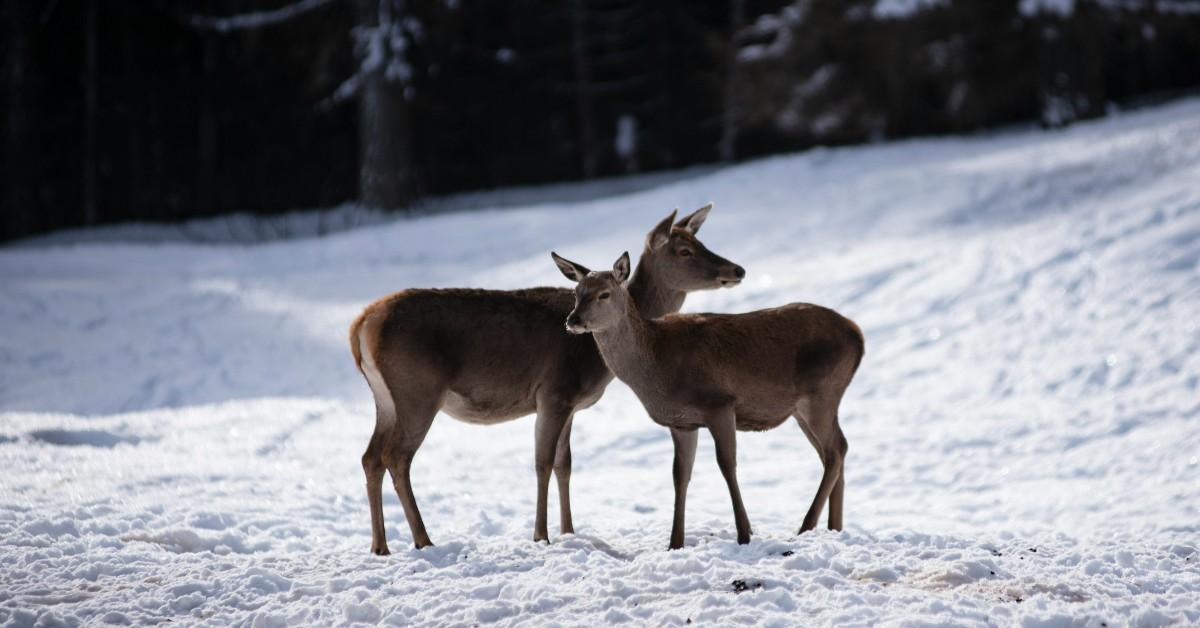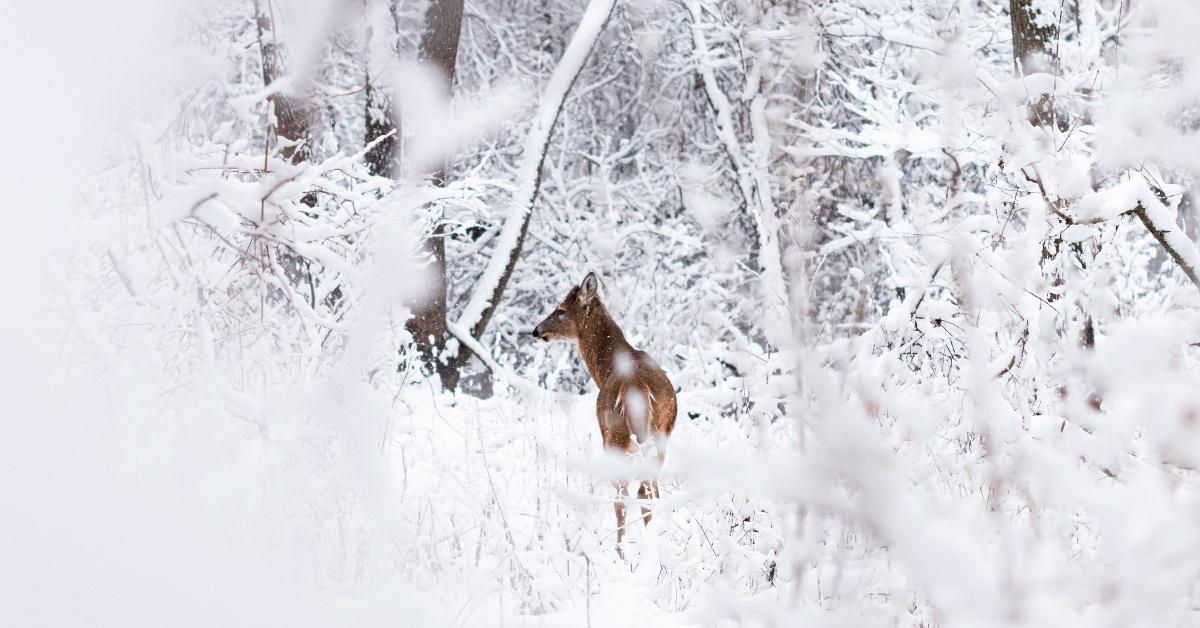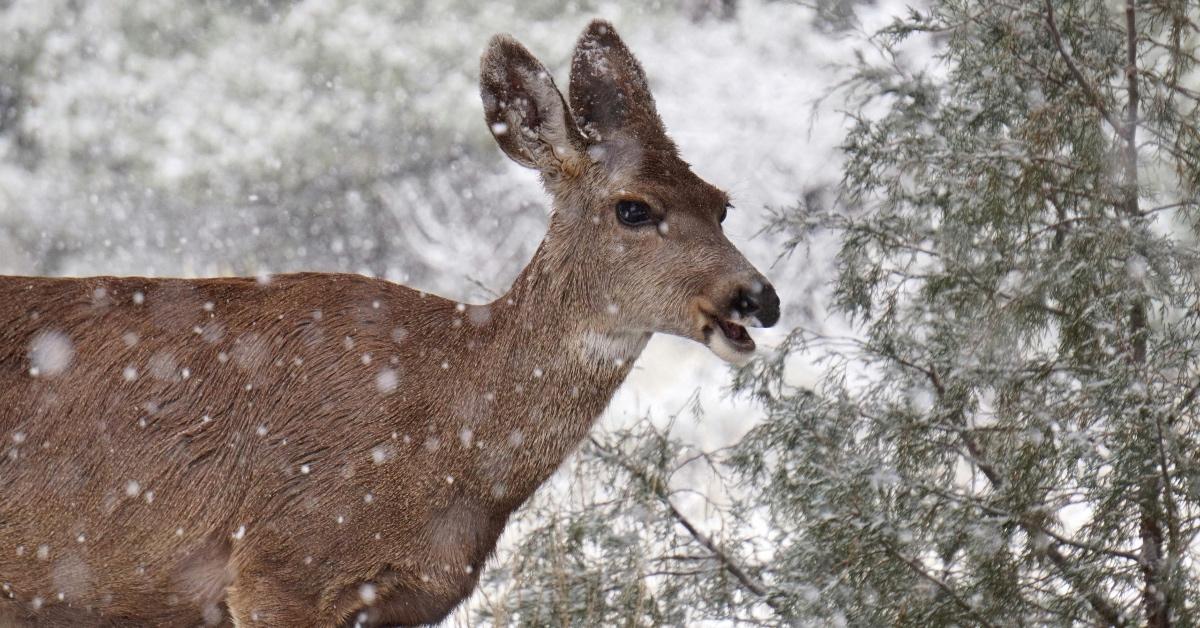Warm Coats and Plenty of Insulation Are Just a Few Ways Deer Beat the Winter Chill
Not even frigid temps can get to deer.
Published Jan. 20 2025, 2:16 p.m. ET

For many of us, deer are synonymous with winter. Whether it's because of Santa's reindeer or because we've grown accustomed to catching a glimpse of their stark, dark fur against the crisp white of newly fallen snow, many of us almost expect to see these cute little critters out and about when temperatures drop.
Given that they have shorter hair than most of their other furry forest friends, their appearance during the colder months may leave many wondering how deer stay warm in the winter.
The good news is that deer have a lot of natural barriers against plummeting temperatures, and you can learn more about them by reading below.

How do deer stay warm in the winter?
According to the A to Z Animals website, deer owe their winter warmth to their fur coats. While they may not appear as long or luxe as some other animals (like bears and wolves), deer have the perfect added layer in their "winter" coat. That's because they naturally grow a layer of guard hairs over their traditional undercoat, which is already pretty thick.
This allows them to keep more of their body heat, and they don't lose as much warmth when temperatures drop.
In addition to packing on some extra fur, deer also add on a little more weight in the winter. They do this by changing the foods they eat, adding more nuts and berries to their normally grass and leaf-heavy diet. The added calories really help them to add more fat to their slender frames, which can not only help keep them warm, but also help them to stave off hunger when food sources become scarce during those cold months when not much is growing.
They also change their habits a bit so that they hold onto those extra calories, opting to move a bit less when it gets cold out. That means they are less likely to be seen frolicking or playing during the winter months. This can also help drop their metabolism, which makes it harder for them to shed pounds.

Where do deer sleep in the winter? Do they hibernate?
Unlike bears, deer do not bed down for the season. Instead, they may find themselves creating makeshift shelters to protect themselves from the chilly temperatures and slicing wind that are both common during this time of year, according to the Lloyd Center.
That means they may make their beds in thickets, under some evergreen trees, or even in areas that are already naturally carved out like in some brush.
When there is snow on the ground, deer will look for areas away from the white stuff, sometimes even using their antlers to move the snow away from where they want to be, even using them to keep food sources uncovered and accessible when the snowfall begins to intensify for the season.

What do deer eat in winter?
If you feel concern for deer during the coldest months, you wouldn't be alone. However, many government organizations, such as the Maine Department of Inland Fisheries and Wildlife, urge well-intentioned citizens not to put out food for them, which could result in severe digestive issues, create competition for feeding, or even spread disease.
During winter, deer eat what's called "woody browse," per Field & Stream, which is comprised of leaves, twigs, buds, or high-growing vegetation. The list of what deer eat is pretty extensive, and includes ash, dogwood, hickory, honeysuckle, maple, oak, willow, and more. Deer also eat foods like acorns, alfalfa, and brassicas.